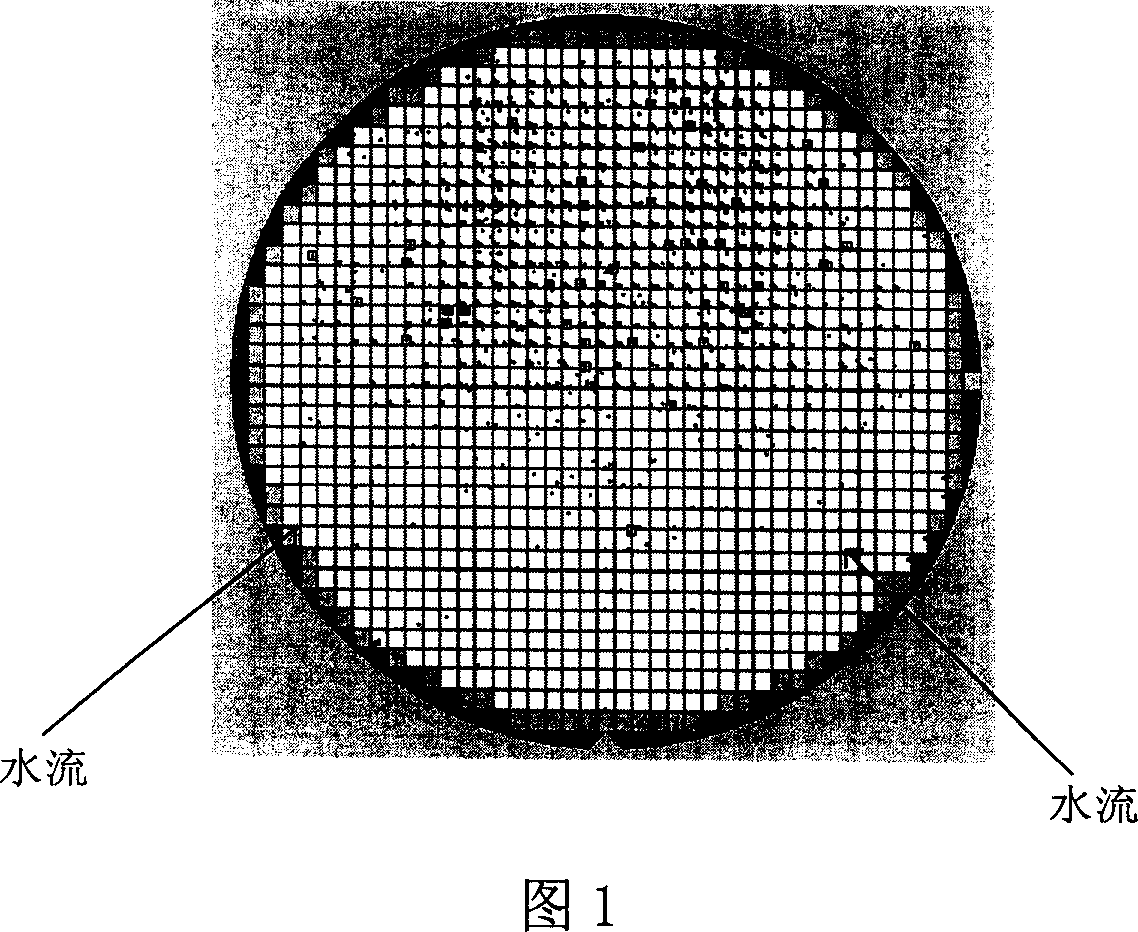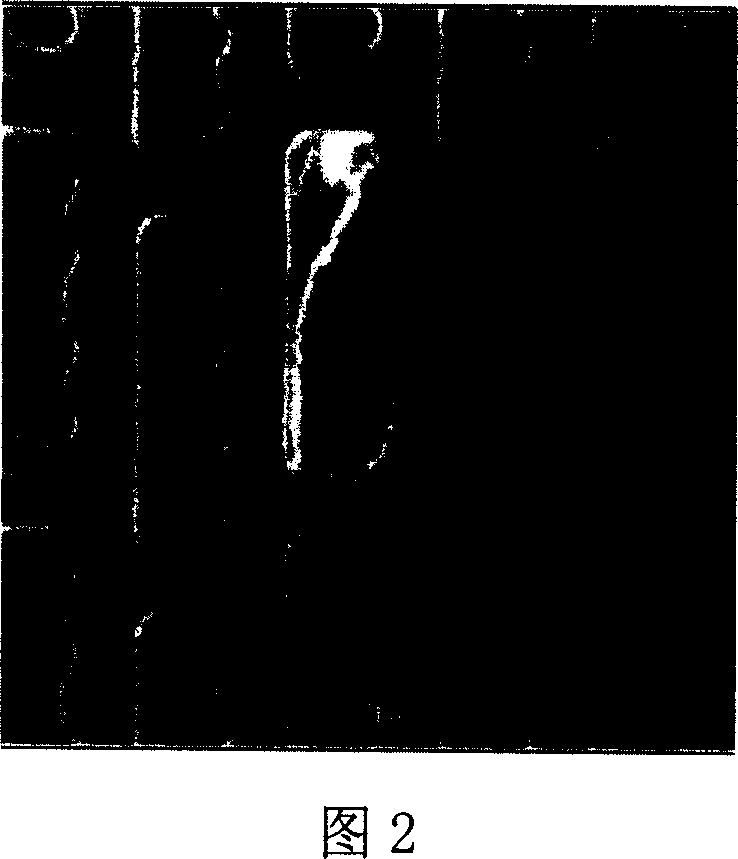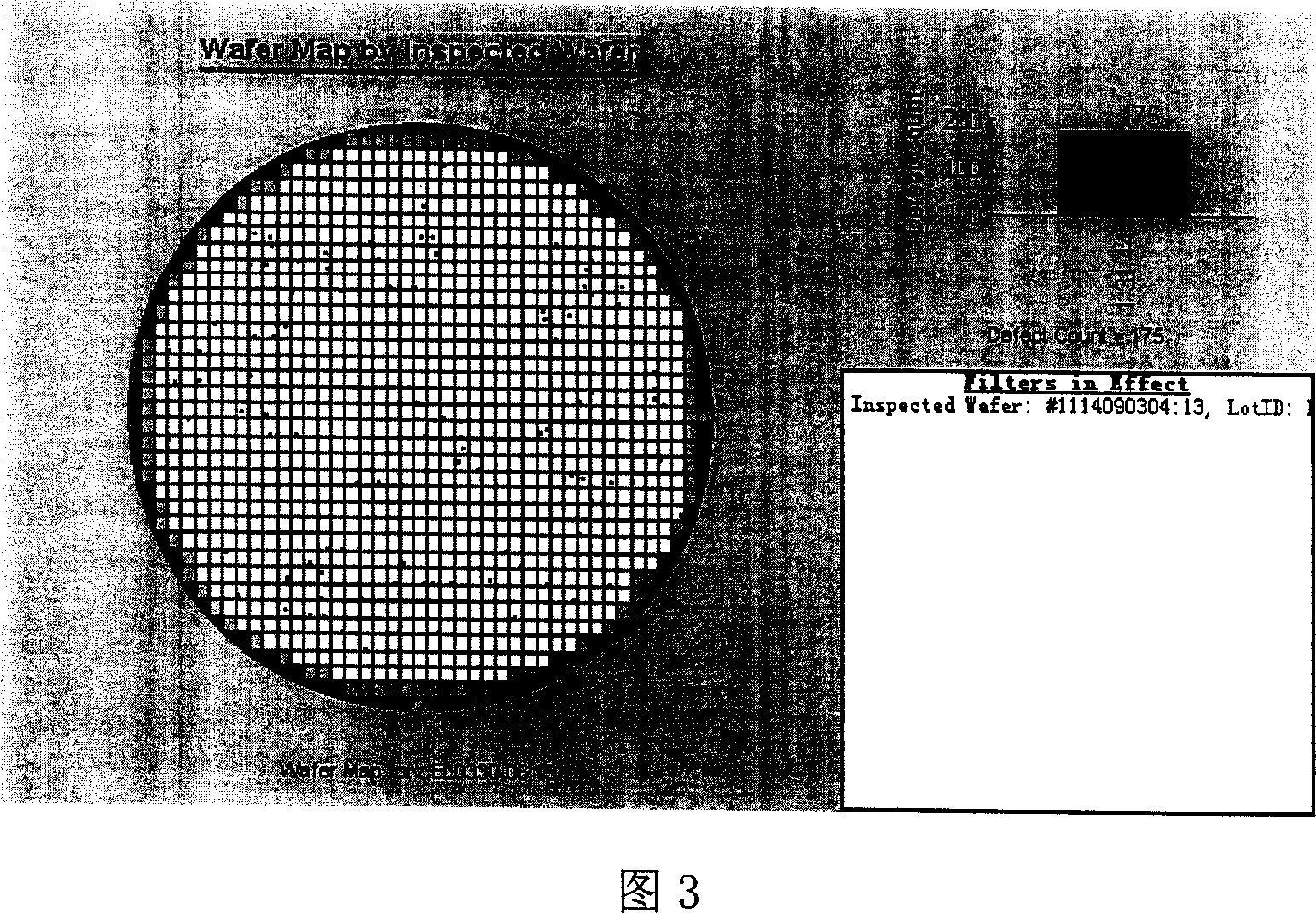Decreasement for residual polymer during low-temperature nitrogen/hydrogen ashing procedure
A technology of polymers and high polymers, applied in the field of polymers, can solve problems such as ineffective removal, and achieve the effect of wide adaptability and long cleaning life
- Summary
- Abstract
- Description
- Claims
- Application Information
AI Technical Summary
Problems solved by technology
Method used
Image
Examples
Embodiment 1
[0028] After the channel etching process is completed, the samples to be cleaned are first subjected to a nitrogen / hydrogen ashing process at room temperature to remove the polymer crust formed after etching. Among them, the ratio of nitrogen and hydrogen used in the ashing process, the power of the RF bias, and the duration of the process are adjusted according to the actual situation, that is, according to the actual polymer residue polymerization degree and hardening degree, and the DUO material The impaction method to adjust. The conditions of the ashing process in this embodiment are, N 2 / H 2 The ratio is N 2 70% and H 2 30%, RF bias 500W for 30 seconds.
[0029]Then the wet cleaning process is carried out. You can use CLK888, or AP-811 produced by ATMI as a follow-up cleaning agent, or you can use DAAF produced by Daikin, or a solution containing these components. The cleaning agent used in this embodiment is CLK888:H 2 O 2 =10:1, the cleaning temperature is 50-7...
Embodiment 2
[0032] In the 65nm back-end process, DUO193 is used as the anti-light reflection material. After the development and etching steps of the photolithography process, a layer of photoresist is formed on the surface of the semiconductor device, and DUO193 and other substances are cross-linked and polymerized to produce a polymer crust.
[0033] The samples to be cleaned are first subjected to a nitrogen / hydrogen ashing process at room temperature to remove the polymer crust formed after etching. Among them, the ratio of nitrogen and hydrogen used in the ashing process, the power of the RF bias, and the duration of the process are adjusted according to the actual situation, that is, according to the actual polymer residue polymerization degree and hardening degree, and the DUO material The impaction method to adjust. The conditions of the ashing process in this embodiment are, N 2 / H 2 The ratio is N 2 70% and H 2 30%, RF bias 500W for 30 seconds.
[0034] Then, wet cleaning i...
PUM
 Login to View More
Login to View More Abstract
Description
Claims
Application Information
 Login to View More
Login to View More - R&D
- Intellectual Property
- Life Sciences
- Materials
- Tech Scout
- Unparalleled Data Quality
- Higher Quality Content
- 60% Fewer Hallucinations
Browse by: Latest US Patents, China's latest patents, Technical Efficacy Thesaurus, Application Domain, Technology Topic, Popular Technical Reports.
© 2025 PatSnap. All rights reserved.Legal|Privacy policy|Modern Slavery Act Transparency Statement|Sitemap|About US| Contact US: help@patsnap.com



